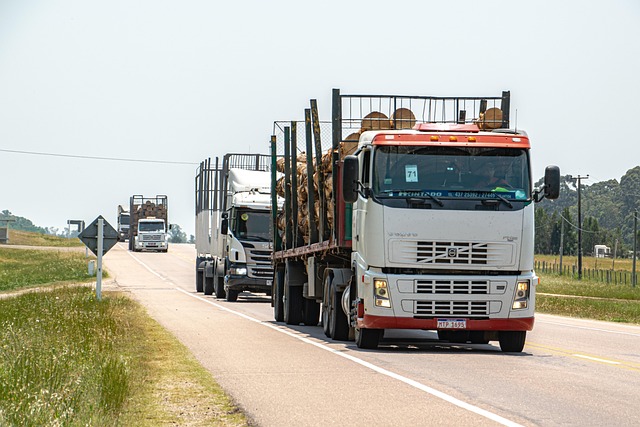Looking to register your car in California? This comprehensive guide walks you through every step, from understanding key requirements to submitting your application. We’ll show you how to gather essential documents, verify your vehicle’s VIN (using a reliable vin verifier), select the right registration type, and pay fees seamlessly. By following these straightforward steps, you’ll be on your way to a smooth car registration process in California.
- Understand California Car Registration Requirements
- Gather Necessary Documents for Vehicle Registration
- Verify Vehicle's VIN (Vehicle Identification Number)
- Choose an Appropriate Registration Type in California
- Submit Application and Pay Fees for Car Registration
Understand California Car Registration Requirements

Before registering your car in California, it’s crucial to understand the state’s specific requirements for vehicle registration. One key aspect is ensuring that your car’s VIN (Vehicle Identification Number) is accurately verified. This process, often facilitated through a mobile vin verification or mobile vin verifier service, checks the VIN against the manufacturer’s records to confirm its authenticity and history. It’s essential to have this step completed before proceeding with registration.
California also mandates a thorough inspection of your vehicle, covering key components like brakes, lights, and emissions systems. This vin inspection ensures that your car meets safety and environmental standards set by the state. Proper documentation, including proof of insurance and ownership, is equally important to streamline the registration process at the California Department of Motor Vehicles (DMV).
Gather Necessary Documents for Vehicle Registration

Before you start the registration process, make sure you have all the required documents. The California Department of Motor Vehicles (DMV) requires several key pieces of information to register a vehicle. One crucial document is the Vehicle Identification Number (VIN) verifier, which can be obtained through a mobile VIN inspection or verification service. These services provide a quick and convenient way to confirm your vehicle’s details using just its unique VIN number.
Additionally, you’ll need proof of ownership, typically in the form of a title or a bill of sale, along with valid identification such as a driver’s license or state ID card. It’s also advisable to bring any relevant insurance documents and, if applicable, a completed vehicle sales tax form. Having these documents ready will streamline the registration process at the DMV and help avoid any delays.
Verify Vehicle's VIN (Vehicle Identification Number)

Before you begin the registration process, it’s crucial to verify your vehicle’s VIN (Vehicle Identification Number). This unique 17-character code is a critical component in identifying your car and ensuring its proper registration. A reliable VIN verifier can help you cross-check this information against official databases, confirming the vehicle’s make, model, year, and even its history.
Using a mobile vin inspection tool or a reputable online vin verifier, you can quickly validate the VIN details. This step is essential as it helps prevent fraud and ensures that you’re providing accurate data to the California Department of Motor Vehicles (DMV). With a valid VIN, you’ll have a smoother registration experience.
Choose an Appropriate Registration Type in California

When registering your car in California, understanding the different registration types is essential. The state offers various options tailored to specific vehicle categories and needs. One crucial aspect to consider is whether your car is new or used, as this determines the appropriate registration path. A VIN verifier or mobile VIN verification service can help you cross-check the vehicle’s history and ensure it meets all legal standards before making any purchases.
For newly purchased vehicles, a temporary registration is often sufficient while waiting for the official title transfer. Used cars, however, might require additional steps like emissions testing, especially if they are over a certain age. Utilize mobile VIN inspection services to streamline this process, as these solutions allow you to complete necessary verifications from the comfort of your home or local mechanic.
Submit Application and Pay Fees for Car Registration

After gathering all the necessary documents and ensuring your vehicle meets California’s requirements, it’s time to submit your application for car registration. This involves a few key steps. First, you’ll need to complete the Application for Title and Registration (Form DVF 140), which can be done online or in person at a California Department of Motor Vehicles (DMV) office. Make sure all information is accurate and up-to-date.
Once your application is ready, submit it along with the required fees to the DMV. This includes a registration fee as well as a vehicle security fee. If you’re using a mobile vin verifier or conducting a mobile vin inspection to ensure the vehicle’s authenticity, ensure that the verification report is included with your application. This process streamlines the registration and helps prevent fraud, making it an essential step in the car registration process in California.
Registering a car in California involves understanding key requirements, gathering essential documents, verifying the Vehicle Identification Number (VIN) using a reliable VIN verifier, selecting the right registration type, and completing an application with associated fees. By adhering to these steps and utilizing tools like a VIN verifier, you can ensure a smooth process for your vehicle’s registration in the Golden State.
